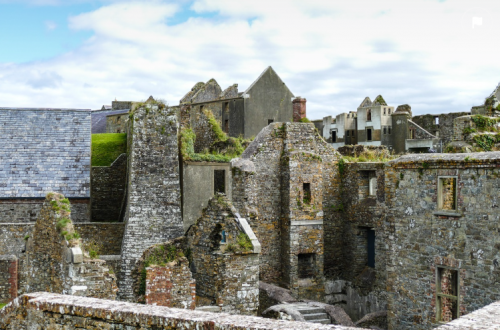
Uncovering Forgotten Cities: Lost Civilizations Revealed
The world is a treasure trove of history waiting to be uncovered. As avid travelers, we often find ourselves drawn to the allure of ancient cities and civilizations, long-forgotten by time. In this journey through history, we’ll embark on an adventure to uncover some of the most intriguing and mysterious lost cities that have recently been revealed to the world. These once-thriving civilizations have been hidden beneath layers of earth, waiting for intrepid explorers and archaeologists to bring their stories back to life.
Pompeii: A Frozen Glimpse into Roman Life
Pompeii, the ancient Roman city frozen in time by the eruption of Mount Vesuvius in AD 79, is a captivating testament to the daily life of its inhabitants. The meticulous preservation of this city provides a vivid window into the past, with well-preserved houses, frescoes, and even the haunting plaster casts of citizens caught in their final moments. Today, Pompeii stands as one of the most visited archaeological sites globally, offering visitors a unique opportunity to step back in time.

Machu Picchu: The Lost Inca Jewel
Machu Picchu, perched high in the Andes Mountains of Peru, is an enigmatic Inca citadel shrouded in mist and surrounded by breathtaking scenery. Abandoned and forgotten for centuries, it was rediscovered by American historian and explorer Hiram Bingham in 1911. The city’s intricate stone architecture, terraced fields, and mystical aura continue to mystify and inspire travelers from across the globe.
Angkor Wat: The Temple City of Cambodia
In the dense jungles of Cambodia, the Angkor Wat temple complex reigns supreme as one of the most stunning architectural achievements in history. Originally constructed in the 12th century, Angkor Wat was abandoned and reclaimed by the forest, hidden from the world for centuries. French explorer Henri Mouhot introduced it to the Western world in the mid-19th century. Today, Angkor Wat attracts countless visitors, eager to explore its intricate carvings, serene courtyards, and the captivating beauty of the surrounding Angkor Archaeological Park.

Göbekli Tepe: The World’s Oldest Temple
Göbekli Tepe, located in modern-day Turkey, is rewriting the history of human civilization. Dating back over 11,000 years, this ancient site predates the construction of the Egyptian pyramids and Stonehenge. Its massive stone pillars, adorned with intricate carvings, challenge our understanding of the capabilities of ancient hunter-gatherer societies. Rediscovered by German archaeologist Klaus Schmidt in the 1990s, Göbekli Tepe is a testament to the enduring human quest for spirituality and community.
Petra: The Rose-Red City of Jordan
Hidden within the red-rock canyons of southern Jordan, Petra was a thriving trade city in ancient times, strategically located on the Silk Road. Lost to the Western world for centuries, it was rediscovered by Swiss explorer Johann Ludwig Burckhardt in 1812. The city’s most iconic structure, the Treasury, is carved directly into the rose-red cliffs, creating a breathtaking spectacle. Petra’s intricate architecture, including temples, tombs, and an extensive water management system, showcases the engineering marvels of its Nabatean builders.

Cahokia Mounds: The Ancient American Metropolis
In the heart of the United States, near present-day St. Louis, Missouri, lies the archaeological site of Cahokia Mounds. Once the center of a vast Mississippian civilization, this complex featured towering earthen mounds, plazas, and a sophisticated society that thrived around AD 1050-1350. Cahokia was abandoned long before European contact and forgotten by history until the 20th century. Today, visitors can explore the mounds and museum to gain insights into the complex societies that once called this region home.
Great Zimbabwe: A Monument to African Ingenuity
Nestled in the heart of southern Africa, Great Zimbabwe is a testament to the architectural and engineering prowess of ancient African civilizations. The massive stone walls of this city, constructed without the use of mortar, have puzzled historians and explorers for centuries. Although it was recognized by European explorers in the late 19th century, its origins and history were not fully understood until later excavations. Great Zimbabwe is a symbol of African heritage and innovation.
Conclusion: Time Travel through Forgotten Cities

Traveling through these lost cities is like stepping into a time machine. Each site has its unique story to tell, its mysteries to unravel, and its beauty to behold. From the shadowy alleys of Pompeii to the awe-inspiring grandeur of Machu Picchu, these lost civilizations have been revived, offering us a glimpse into the lives of our ancestors.
As you embark on your own journeys to uncover these forgotten cities, remember that the past is never truly lost; it is waiting for curious adventurers to reveal its secrets. In doing so, you become a part of the ongoing story of these remarkable places, ensuring that they will continue to inspire and captivate generations to come. Happy travels and happy exploring!
With this comprehensive guide to “Uncovering Forgotten Cities: Lost Civilizations Revealed,” we hope to have ignited your passion for history, adventure, and discovery. So pack your bags, lace up your hiking boots, and set forth on a journey through time, as these remarkable cities invite you to walk in the footsteps of the past.


